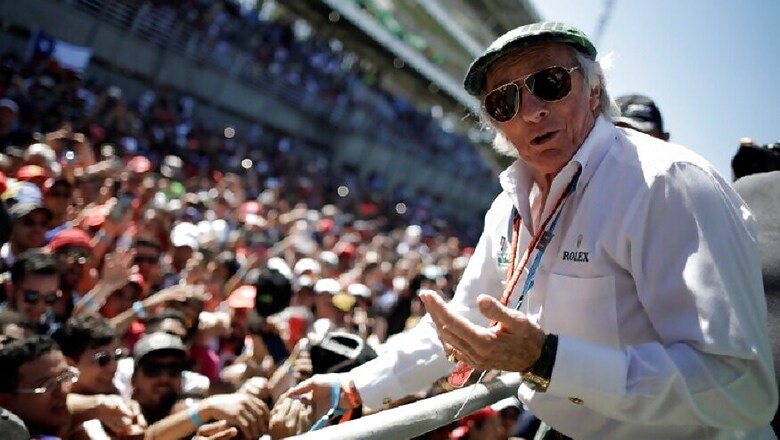
views
Jackie Stewart has only ever had one answer when asked who was the finest driver he raced against in Formula One: Jim Clark. Saturday is the 50th anniversary of the death of one of the sport's all-time greats, in a Formula Two crash at Germany's Hockenheim circuit on April 7, 1968. While millions around the world were plunged onto mourning by the death of Brazil's triple world champion Ayrton Senna at Imola in May 1994, the Scot's accident left a previous generation just as stunned. That afternoon, like the one in Italy a quarter of a century later, had similarly far-reaching consequences for driver safety.
"If Jim Clark could die, anybody could die," Stewart, who had shared an apartment with his compatriot and close friend, told Reuters before travelling to this weekend's Bahrain Grand Prix.
"Jimmy’s death at Hockenheim was the beginning of us really driving home the reality that has changed the entire world of Formula One ... in regards to track safety," added the triple world champion.
"He was almost bullet-proof," said the 78-year-old. "He drove in such a smooth and calculated way that he never over-drove. He was never a driver anybody would have ever thought would have died in a racing car.
"And suddenly the sport allowed that to happen, because there were no barriers and no protection from those trees that the car catapulted into."
Clark, as quiet and indecisive out of the car as he was commanding in it, lost control at speed, possibly due to a deflated rear tyre on his Lotus, and somersaulted into trees.
There were no television images, no photographs other than of the wreckage.
The 1963 and 1965 world champion, who had won more grands prix than any driver at that time, including seven victories in a single season and a total of 25 from 72 starts, died instantly of a broken neck. He was 32.
EMPTY PHONE CALL
Stewart was in Spain at the time carrying out a track inspection at the Jarama circuit near Madrid for the grand prix drivers' association.
"It was a few days before I moved to living in Switzerland. Helen (Stewart's wife) was already in Switzerland when I called her up. And of course she had heard about it as well," he recalled.
"We had an empty phone call. Neither of us could really speak."
April 7 that year was the first in a deadly sequence that followed on the same weekend of successive months.
British driver Mike Spence, a former team mate of Stewart's at BRM, died on May 7 at Indianapolis.
Italian Ludovico Scarfiotti was killed on June 8 in practice for a hillclimb race and on July 7 Frenchman Jo Schlesser died at the wheel of a Honda during the French Grand Prix at Rouen.
The old Nuerburgring, the most dangerous track of all at the time, was the early August race.
Stewart famously won by more than four minutes in rain and fog but his immediate thoughts were for the safety of others at the 'Green Hell'.
"I won the race and because of those four consecutive months, and mine was the fifth month in conditions that were appalling, the first question I asked was ‘is everybody alright?’," he said.
Clark, who would have been godson to Stewart's second son Mark, was one of many who died in motorsport's most dangerous era but Stewart said the accident did not change his commitment to racing.
"That sounds rather hard-nosed, but racing drivers of that period were very strange people in many respects. We were going to more funerals than anybody would ever go to," he said.
"And these were people we lived with, we travelled with, we holidayed with and raced with."
The Scot, now busy campaigning to find a cure for the dementia his wife suffers, has helped ensure memories are kept alive in a revamped museum being built at Duns in the Scottish borders.
Many of the visitors are Americans fascinated to find out more about the quiet sheep farmer who spent his entire career with Lotus and also won the Indianapolis 500 in 1965.
Clark is honoured by a granite memorial at Hockenheim but the scene of the accident is now covered by trees, deep in the forest.
"He only won two world championships because his life was taken away from him. He would have won more, of course he would have," said Stewart.
"Outside of Juan Manuel Fangio, for me he is the greatest racing driver in the manner in which he conducted his life, on the track as well as off the track."
Also Watch: Top Five Cars at New York Auto Show 2018 | Cars18



















Comments
0 comment